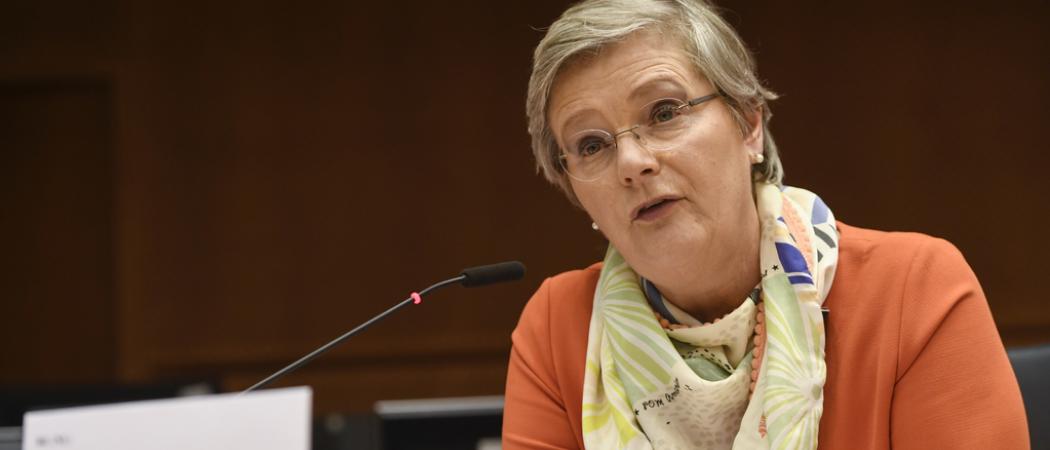Horizon Europe shadow rapporteur Lieve Wierinck says the new European Innovation Council ‘covers same areas’ as European Institute of Innovation and Technology and predicts the two bodies will merge

Lieve Wierinck, Photo: European Parliament
A key negotiator for the EU’s next research programme predicts that the European Innovation Council (EIC), the European Commission’s proposed new technology commercialisation body, will – inevitably - assimilate the European Institute of Innovation and Technology (EIT), because the two innovation hubs are so similar.
“The EIC proposes to cover the same areas as the EIT,” Wierinck, Belgian MEP and shadow rapporteur on the Horizon Europe research programme, said at a European Consortium of Innovative Universities’ conference in Brussels last Thursday. “I think the EIT will be eaten by the EIC.”
The EIC, due to open its doors in 2021, is slated to get €10.5 billion, about 11 per cent of the total €94.1 research budget for 2021-2027, to divide between a “pathfinder” programme for breakthrough ideas, and an “accelerator” for more developed ones. Its brief will be to provide fast and simple grants, loans, with leeway to take equity in some projects. There will also be mentorship, introductions to other companies and investors, events, and co-funding opportunities with the European Investment Fund, the dominant venture capital engine in Europe.
EIC shows significant overlap with the EIT, launched in 2008. This Budapest-based body funds collaborations between universities and industry in fields including climate change adaptation and sustainable energy. It also runs university courses in innovation, which is not a role foreseen for the EIC. In comparison to EIC, the EIT is due to get a lowly €3 billion from Horizon Europe.
Wierinck, who will lay out the position of her liberal ALDE group on Horizon Europe, captures in blunt language some of the confusion – particularly felt among universities – over the need for a new EU innovation body, and also the fears of EIT-fans that it will languish in the shadow of a new funder that carries a lot of political favour.
The two innovation funders are not intended to compete with each other, said a Commission official, while conceding the need to distinguish them better.
“We’ve tried to make the EIC complementary to the EIT, but perhaps we’ve not done as good a job as possible in communicating this to the Parliament,” said Stephane Ouaki, head of SMEs, financial instruments and state aid, at the European Commission’s directorate for research.
Explaining the difference between the EIC and the EIT in June, Commission director general for research and innovation Jean-Eric Paquet said, “EIT will continue to do what it does well on pathfinding. [But] the EIT cannot scale up companies.” Rather, it can act like a feeder of promising commercial ideas to the EIC.
Wierinck will help steer Horizon Europe through Parliament in negotiation with the two leading draftsmen on the programme, Romania’s Dan Nica and Germany’s Christian Ehler.
In a report outlining amendments to the Commission’s Horizon Europe proposal, Ehler writes, “Current duplications between the EIT and EIC need to be settled.”
“The EIT is already a well-established one-stop shop for innovation in Europe,” the report says. “To deliver on expected innovation impact for citizens, all Horizon Europe instruments must interlock and not block.”
Red line on science
Maintaining the budget of Europe’s top science funder, the European Research Council, is the only red line in negotiations for ALDE, Wierinck said. “ERC funding cannot diminish,” she said. “It can only become more.”
The Commission has proposed €16.6 billion for ERC, an increase from €13.1 billion under Horizon 2020, the current seven-year programme. However, ERC’s share of the whole programme’s budget would remain at about 17 per cent.





 A unique international forum for public research organisations and companies to connect their external engagement with strategic interests around their R&D system.
A unique international forum for public research organisations and companies to connect their external engagement with strategic interests around their R&D system.